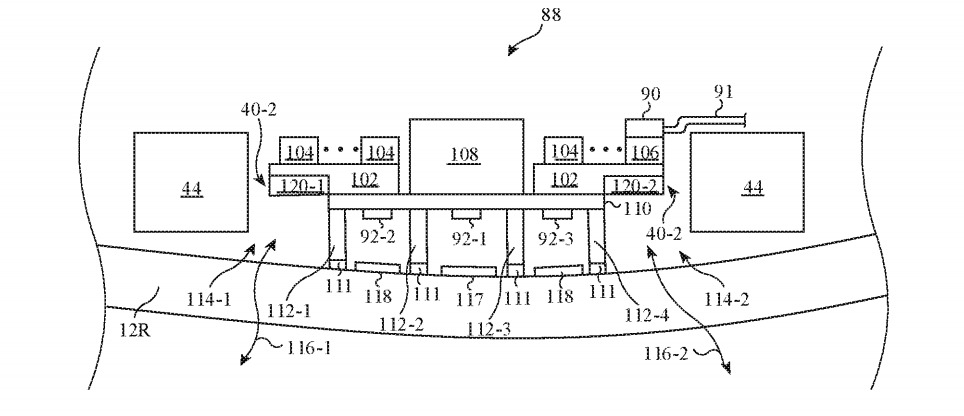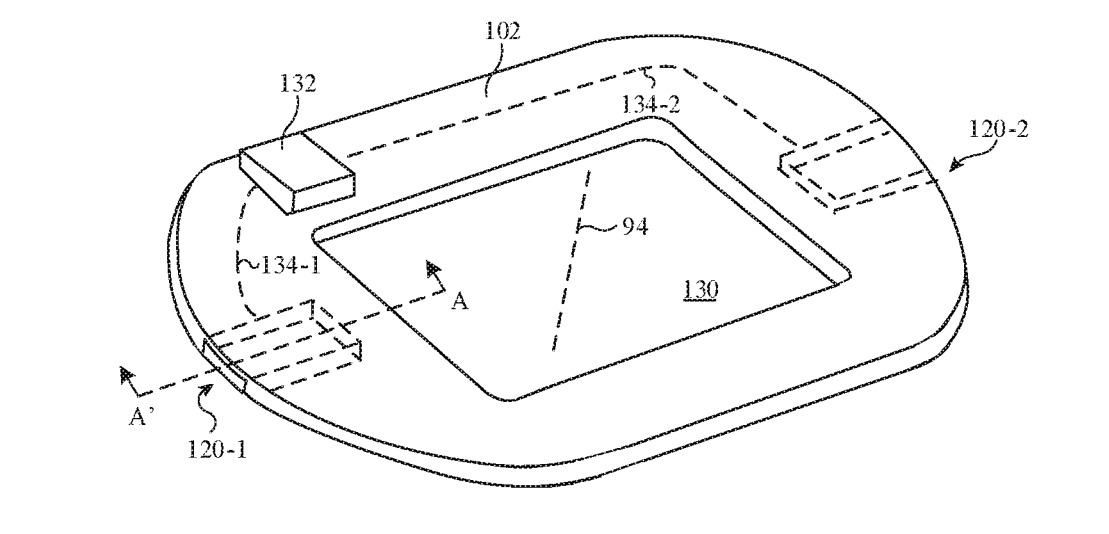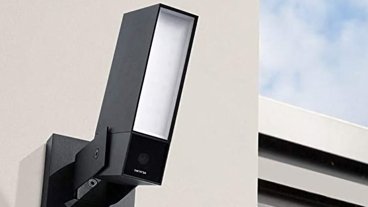A future version of the Apple Watch could spread its antennas throughout the wearable device's body, including adhering some relating to wireless connectivity on the back casing, to improve the quality of reception.
The Apple Watch relies on multiple different types of radio signals to function, including those governing Bluetooth, Wi-Fi, NFC, GPS, and cellular connections. As these systems rely on picking up different wavelengths with accuracy, this entails the use of multiple antennas, as an antenna may be effective for one type of signal but not another.
Aside from finding space for all of the antennas, the quantity also means there's the potential for them to interfere with each other, making it essential that the antennas are positioned perfectly.
In a patent granted by the US Patent and Trademark Office on Tuesday titled "Electronic devices having integrated antenna structures," Apple suggests a solution in the form of a dielectric rear housing wall on the back of the Apple Watch, that could be used to house some antennas.
Apple proposes a backside circuitry module could be formed over the rear housing wall, which can include a printed circuit substrate, sensor components, circuitry, and other elements, as well as support structures between the substrate and the dielectric housing. This circuitry module could include coil structures on the back side, enabling wireless charging and other similar functions to work.
The substrate could also include openings that can allow sensor components and circuitry to pass through, such as for the rear module used for monitoring the user's heart rate.
For the antennas, Apple says it could embed an antenna resonating element within the substrate, with multiple such elements embedded on opposite sides. These elements could be attached to radio-frequency transceiver circuitry powering things like NFC, with the filing advising this would be used for radio frequency signals above 10GHz.
A plurality of metal and dielectric layers could be stacked on the substrate, sandwiched between substrate layers, which could be used to create an antenna resonating element. More layers could be applied to create a radio-frequency transmission line.
Versions of this could use protruding elements in the dielectric structure to hold the antenna resonating elements, which are extended away from the sensor components and circuity to minimize interference.
In short, Apple's suggestion is that it wants to mount antennas on a layer towards the back of the Apple Watch's internals. While this could allow the antennas to have more room to function without interference, this does move the antennas away from the top face surface of the Apple Watch itself, which would be the most ideal position for the antennas to be placed if they don't interfere with the display.
Placing it near the rear housing and the wrist isn't entirely a bad idea, as that does leave the sides of the Apple Watch casing that don't have sensors and buttons as ideal places for radio signals to pass through.
The patent lists its inventors as Daniel J. Hiemstra, Jayesh Nath, and Timothy B. Ogilvie. It was originally filed on September 26, 2019.
Apple files numerous patent applications on a weekly basis, but while the existence of a patent indicates areas of interest for Apple's research arm, it doesn't guarantee the ideas will appear in a future product or service.
This is not Apple's only look into creating new antennas for the Apple Watch lineup. In August, Apple wanted to embed antennas for wireless connectivity inside the display of an Apple Watch, while a filing from November 2019 suggested the antennas could be hidden within the watch band.
 Malcolm Owen
Malcolm Owen









-m.jpg)






 Charles Martin
Charles Martin

 William Gallagher
William Gallagher

 Christine McKee
Christine McKee
 Wesley Hilliard
Wesley Hilliard

 Andrew Orr
Andrew Orr








7 Comments
"A plurality of metal and dielectric layers could be stacked on the substrate, sandwiched between substrate layers, which could be used to create an antenna resonating element."
Well duh. I think said exactly that to my wife the other day on the way to the store.
How about putting them in the band? Plenty of room for bigger antennae there. Just need some kind of connector.
I have had absolutely no communications problems with my LTE Series 4.
I consider it the most amazing product ever made. It really wasn't long ago that this stuff wasn't even science fiction -- it was beyond science fiction. Even Kirk & Spok had to carry flip phones.
I don't really see what the patent says that hasn't already been done before. I realise Apple would not apply for it unless there was something different, but I have to wonder how small the difference must be for the patent office to be able to accept the cash. Stacking multiple components in layers on a substate is nothing new.